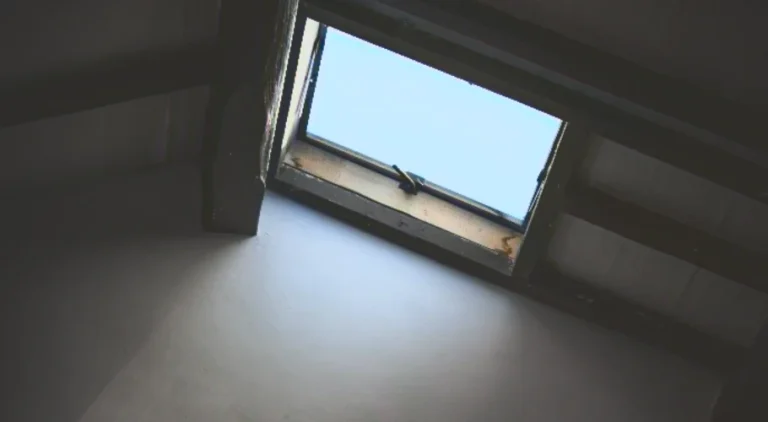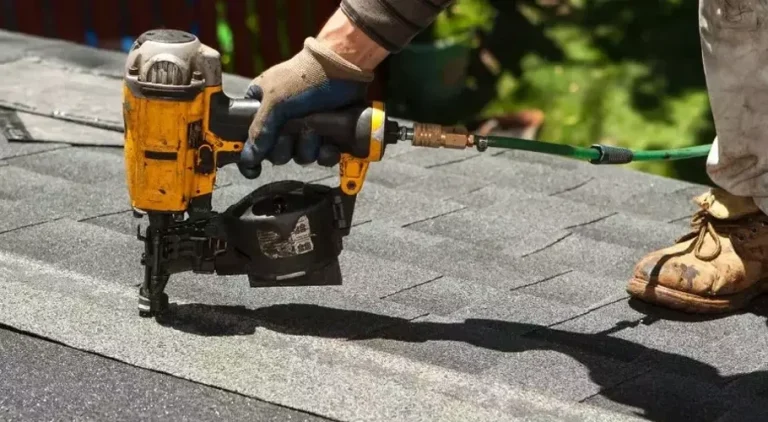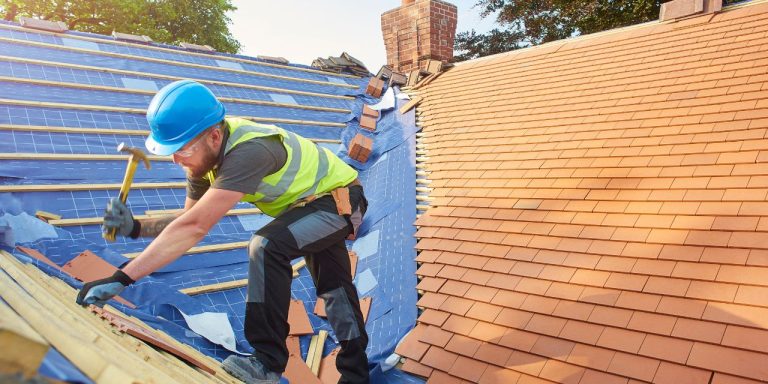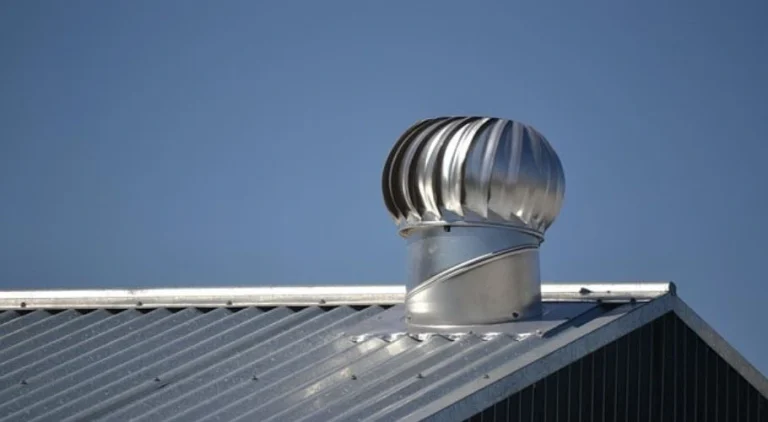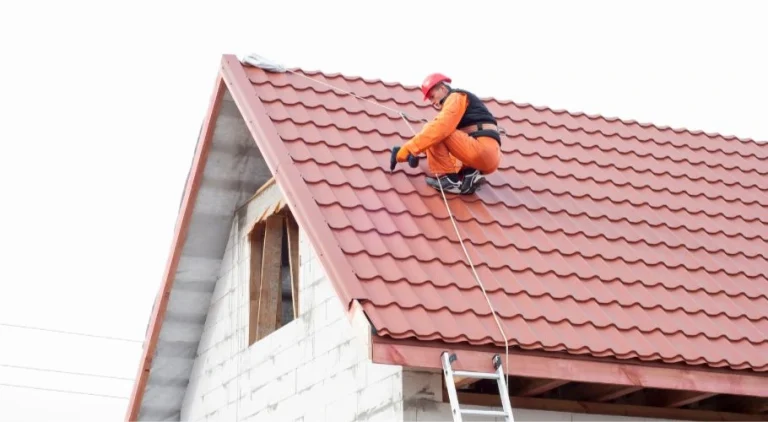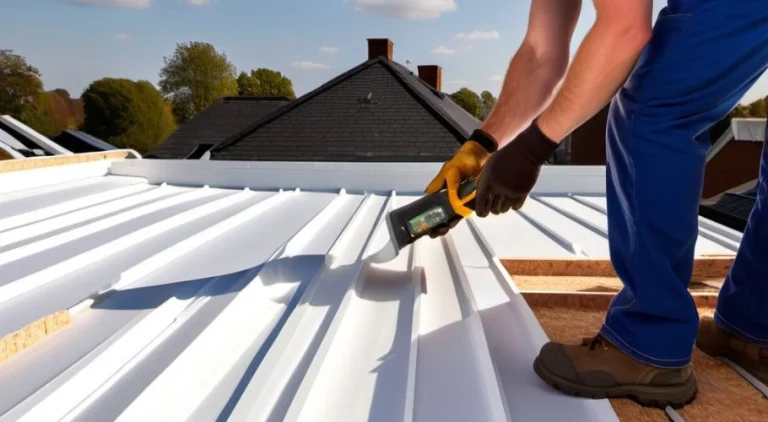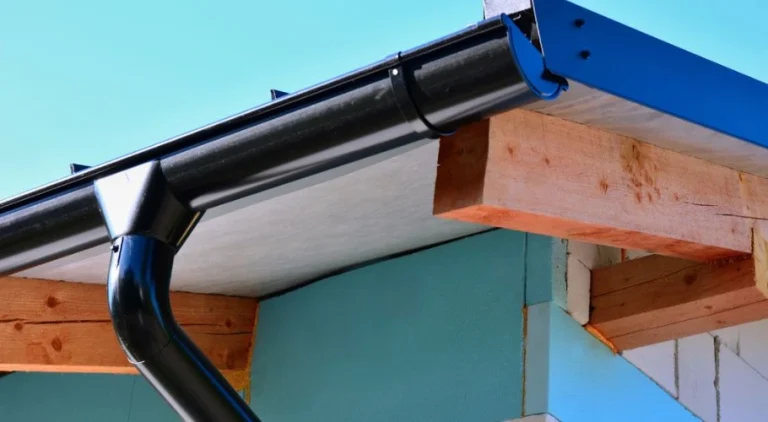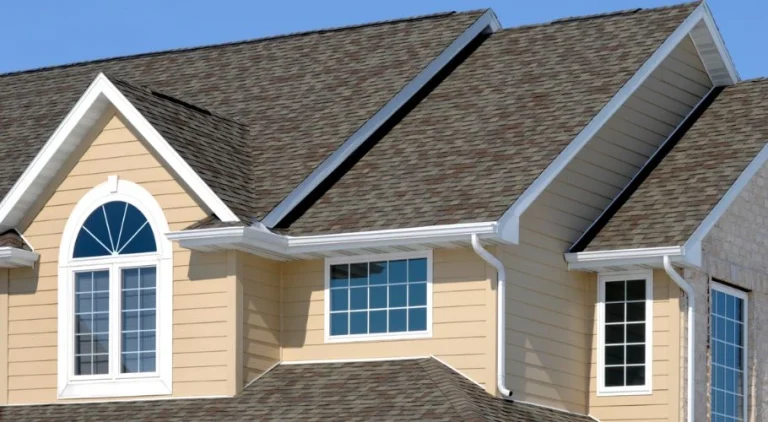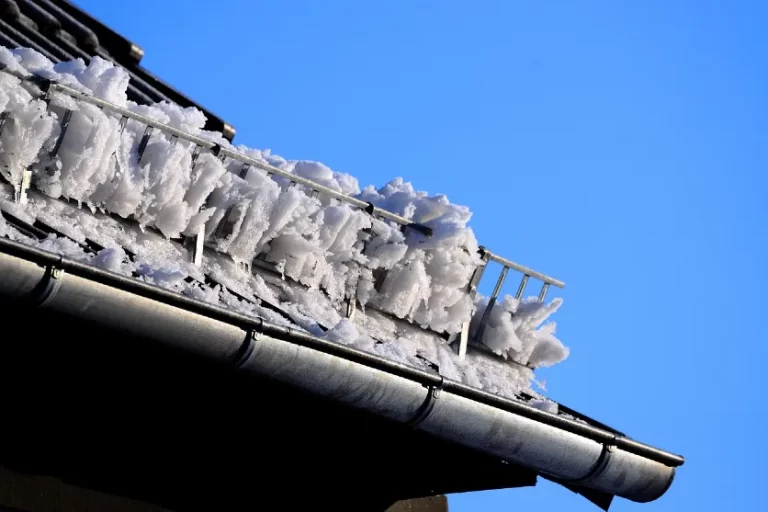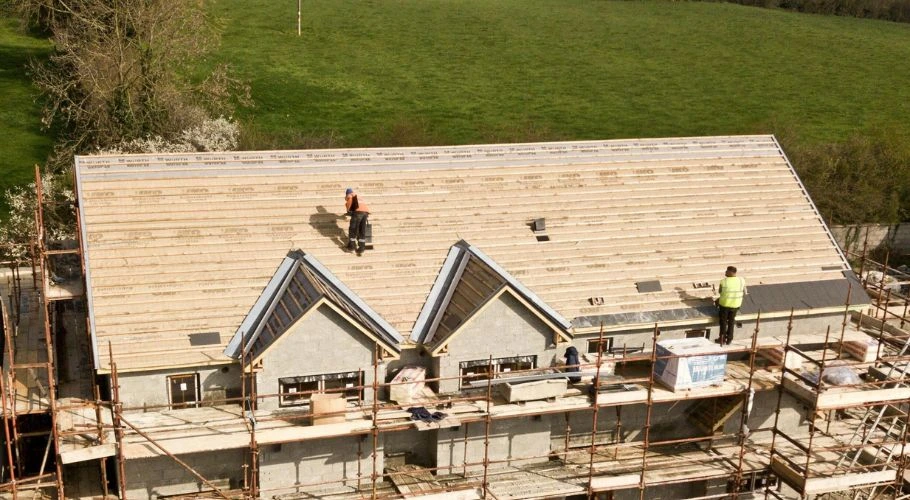Winter Roof Protection: Preventing Ice Dams and Damage
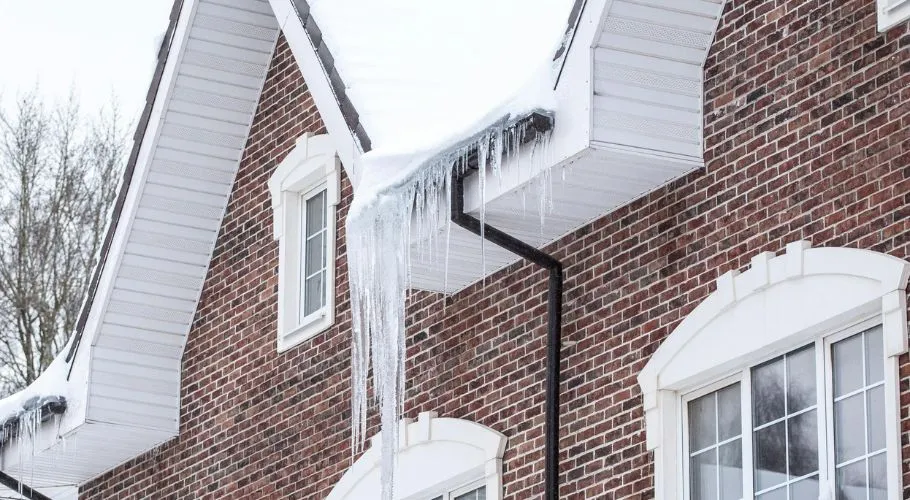
Winter weather arrives with snow, cold temperatures, and (unfortunately) the risk of those pesky, troublesome ice dams. As a roofing contractor in Oklahoma City, our team at Robbins Roofing knows exactly how the winter season can wreak havoc on roofs, so homeowners need to be prepared to deal with potential roof damage. In this blog, we’ll talk about how you can deal with ice dams, explore preventative measures, and go over some winter roof protection tips to help you protect your home.
Related Article: Roofing Contractor Tips: How to Find the Best Roofers
What Are Ice Dams?
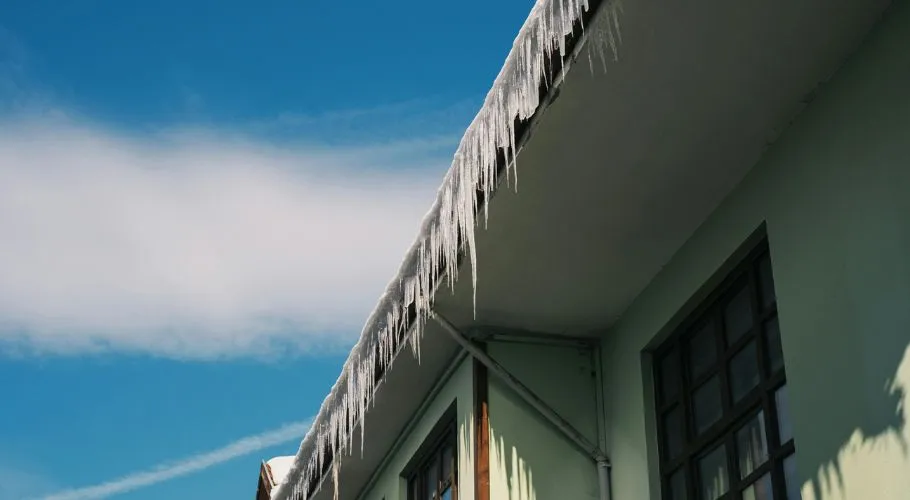
When the cold weather hits, heavy snow can lead to ice dams which are thick layers of ice that form at the edges or eaves of roofs. This happens when snow melts on the surface of the roof due to the heat inside your home. Then, the melted ice travels down to the colder roof edges and ends up freezing there, forming an ice dam. This can lead to all sorts of roof damage which may require roof repairs, and in worst cases, total roof replacement.
What Are the Effects of Ice Dams?
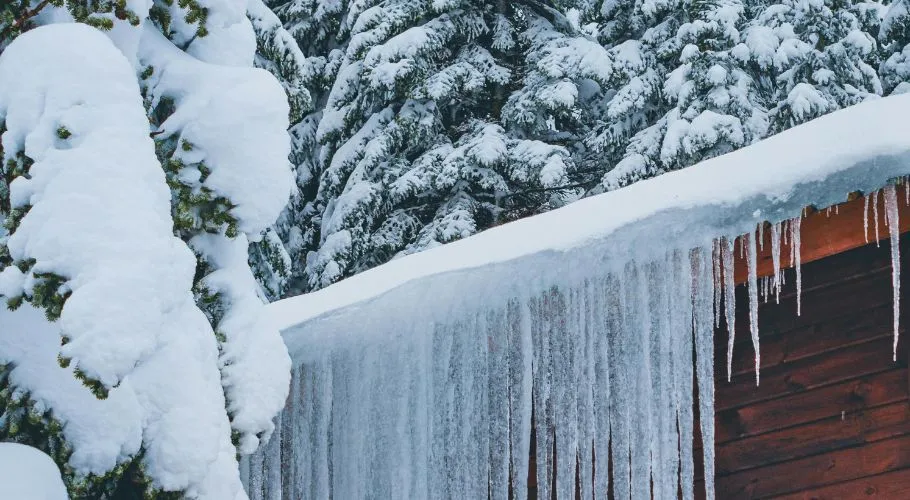
Left unchecked, ice dams can cause significant damage to your roof and your home. Here are some of the most common effects of ice dams during colder months:
Damaged Gutters and Downspouts
Ice dams form at the eaves of the roof, meaning their weight can damage and compromise gutters and downspouts. The ice dam can push the gutters from their original position and cause damage to the gutters and surrounding materials.
Leaking Roofs
When ice dams form a solid barrier at the edge of roofs, they collect melted snow behind them, which can seep into the shingles and the roof flashing around chimneys, roof vents, and pipes. This is even more likely if your roof has missing shingles. As a result, the water can leak into the house and lead to water damage.
Mold and Mildew
Another consequence of ice dams is the growth of mold and mildew. Due to the leaks caused by ice dams, moisture can get trapped in various spots, like insulation and wooden components. Signs of mold and mildew growth include stale, rank odors and compromised air quality inside your house.
Structural Issues
Water damage and infiltration caused by ice dams can be dangerous for your home’s structural integrity. In particular, leaks can weaken your roofing structure by damaging various roof components such as rafters and decking. If these issues remain unaddressed, you can end up with structural damage.
How to Remove an Ice Dam From Your Roof

Many homeowners struggle with ice dams during the winter months. Removing these thick layers of ice is a daunting task, but it’s still something you can accomplish when done right. Here are some of the ways you can safely resolve your ice dam for a safer and worry-free winter:
Observe Safety Measures
No matter how urgently you want to get rid of those ice dams, don’t forget to prioritize your safety. Have a family member or friend assist you, and wear non-slip shoes to avoid slipping. If you have to get up on the roof, make sure your ladder is sturdy and that it’s standing firmly on flat, level ground. For safety reasons, don’t attempt any roofing work if you’re experiencing severe weather conditions like high winds and heavy snow.
Remove Snow From the Roof
The general rule of thumb is that snow on the roof shouldn’t exceed one foot in height. Most roofs are designed to handle a certain amount of snow load, but there’s always the risk of the roof bowing inward if the snow becomes too heavy for it to handle.
Additionally, the accumulated snow on your roof can melt under the sun and from your house’s heat. Due to the ice dams blocking the way to the gutters, the melted ice can lead to leaks and water damage in your home.
To remove the snow buildup, you can use a long-handled roof rake to scrape or pull the snow off. You can also use it to dislodge the ice dams at the edges of the roofing. If you’re not sure how to do this on your own, we recommend calling a professional roofer to do it for you.
Use Ice Melt (Calcium Chloride) or Warm Water
If the ice dams refuse to detach from your roof, you can use ice melt or calcium chloride to break up the ice dam barrier. Insert the ice melt in a sock and place it on the ice dam to melt those specific spots. You’ll get the job done quicker if you use multiple ice melts.
Alternatively, you can also use warm water to melt sections of the ice dam and snow buildup. Using a pail, watering can, or spray bottle, pour or apply warm water onto the ice dam and snow. This is generally less effective compared to using ice melts, but it can still get rid of small sections of ice.
Use a Rubber Mallet
Another way to remove ice dams from your roof eaves is to use a rubber mallet to break the thick ice layers apart. Be mindful of the falling chunks of ice, and make sure you don’t end up hitting the shingles or the gutter itself.
Repair Roof Leaks and Roof Damage
Once you’ve dealt with all the snow buildup and ice dams, it’s time to address the leaks and damage your roofing may have received. Find out where the leaks are and apply roofing sealant or patching solutions to seal the holes and gaps.
If you find damage like cracked shingles or something more extensive like caved-in portions of the roof, you’ll likely need professional help. At Robbin’s Roofing, we provide storm and weather damage services to help owners address roofing issues due to weather conditions.
How to Prevent Ice Dams From Forming on Your Roof
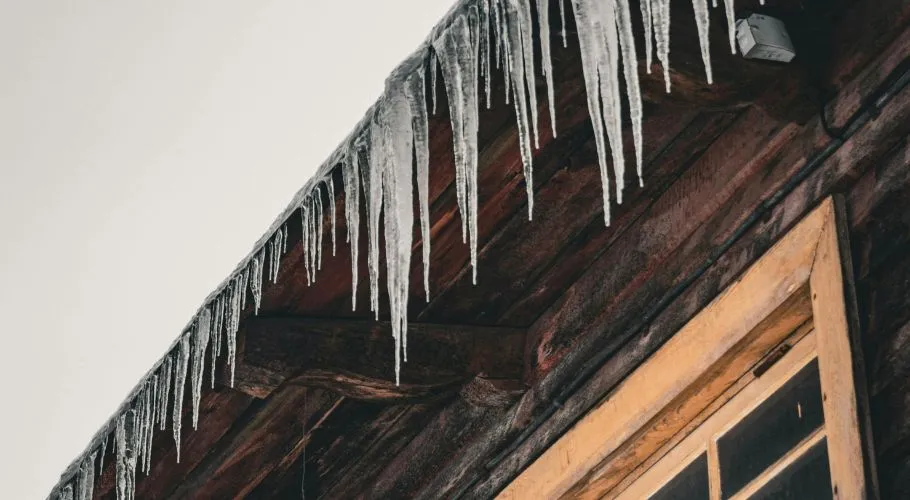
You know what they say—prevention is better than cure. Before the winter season arrives, it’s best to take preventative steps during the summer and fall so your roof is prepared to handle the cold weather and all the challenges it brings with it.
Proper Insulation and Ventilation
With proper attic insulation and ventilation, you can stay warm inside your home and reduce the risk of ice dams forming. Insulation keeps the warmth of your home inside and prevents it from escaping to the roof, which leads to melted snow and eventually turns into ice dams.
Additionally, proper ventilation ensures your home has proper airflow. This is also important in keeping both indoor and roof temperatures consistent, which helps prevent ice dam formations.
Keep Gutters and Downspouts Clear
You want to make sure that your gutters and downspouts are unclogged year-round. Remove fallen leaves, twigs, pine needles, and other debris as these can block rainwater from flowing, which can end up freezing during colder months and lead to ice dam formations.
Regularly Remove Snow Buildup From the Roof
Snow accumulation on your roofing system can melt and transform into ice dams. To prevent this, it’s best to regularly remove snow from your roof by using a long-handled roof rake, snow blower, or snow shovel.
Find and Seal Air Leaks
Air leaks can release heat from your house and into your attic and roof, which can lead to melted snow and ice dam formations. To seal properly, you can use foam sealants to fill those air leaks and gaps. This way, you get to keep more warmth in your house while avoiding ice dams.
Install Heating Cables Along the Roof Eaves
Heating cables are used to keep the edges of a roof warm. It melts snow buildup and prevents melted ice from refreezing along the roof eaves to form ice dams. We recommend positioning them in a zigzag pattern so you cover more space and provide heat to more of your roof eaves.
Install Ice and Water Shields
To prevent ice dams, you can also opt for ice and water shields or ice and water protectors. These are waterproof membranes designed to go underneath your roof shingles, including those along the edges. As the name suggests, they shield the other components of your roof as well as your interior from leaks and water damage.
Choosing the Right Roofing Materials for Cold Weather
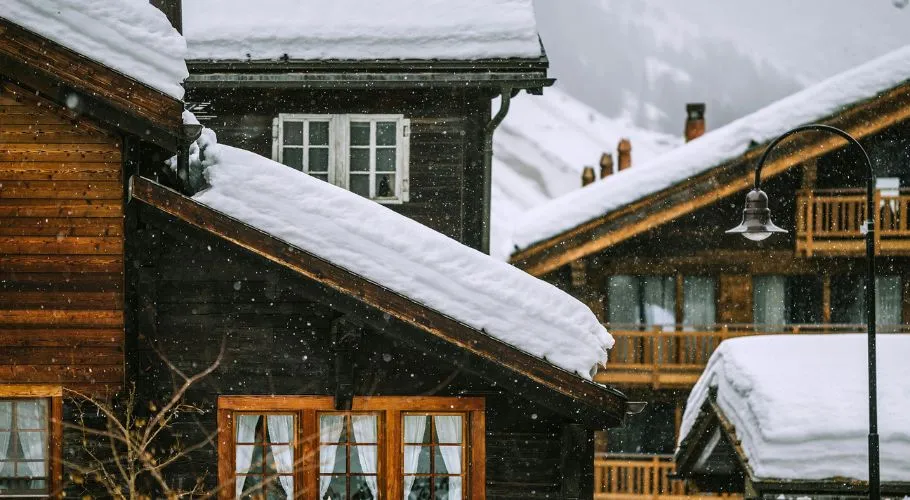
Part of roof damage prevention is a high-quality roof installation and the use of appropriate roofing materials for your region’s climate. There are a lot of options out there when it comes to roofing materials and it can get quite overwhelming, so we’ve put together a list of the best materials you should consider for your roofing system if you live in low-temperature areas.
Asphalt Shingles: This roofing material is popular because it can handle extreme temperatures, including cold weather.
Metal Roofing: Metal roofs are known to easily dislodge snow, which helps prevent snow accumulation and ice dams. They also work well in other climates and tend to have quite a long lifespan.
Slate Roofing: Slate roofing is another long-lasting material. It’s great for cold climates because slate is naturally moisture resistant, which can work wonders in reducing the risks of snow buildup and ice dam formations.
Tile Roofing: Tile roofing is durable and can withstand heavy snow loads, making it an ideal choice for homes in snowy areas. Additionally, this material provides great insulation and handles low temperatures well.
Additional Winter Roofing Tips to Protect Your Home
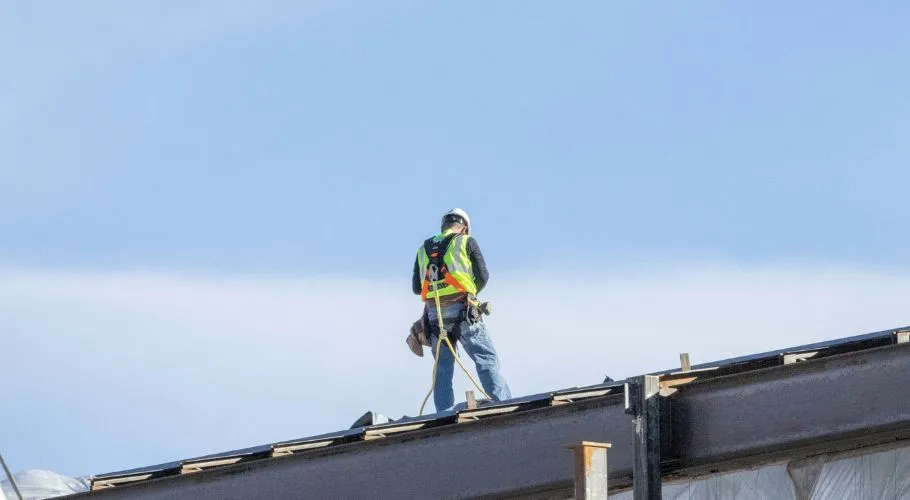
As a homeowner, you can’t help but dread bad weather since it can lead to all sorts of complications with your roofing system. The cold and rainy season is particularly anxiety-inducing for many due to its unpredictable nature. To alleviate your worries, here are some more helpful tips to help you protect your roof from the winter weather:
Fortify your roof during warmer months so your roof is well-prepared for the winter months.
Trim tree branches and limbs hanging over your roof. Snow can collect on these branches, weighing them down and causing them to snap off. The broken branches can then drop to your roof and cause damage to your shingles.
Inspect your roof before the winter. This helps you identify existing issues and weak spots that you can address to prevent more complicated roof problems.
Check if your roof has the correct slope. A proper roof slope makes it easier for snow and ice to slide off, which prevents snow buildup and ice dams.
Don’t hesitate to contact roofing companies if you notice any roofing issues due to the cold weather. It’s best to get it checked out as soon as possible to prevent it from worsening and requiring even more expensive repairs.
Robbins Roofing OKC: Reliable Roof Protection Year-Round
Are you looking for roof repair Oklahoma City services? Our Robbins Roofing team is ready to provide your roof with the services it needs. With our expertise and competent workmanship, we’ll restore your roof to its former glory in no time.
Contact us today and discover why we’re the most trusted roofing company in Oklahoma City and surrounding areas!


